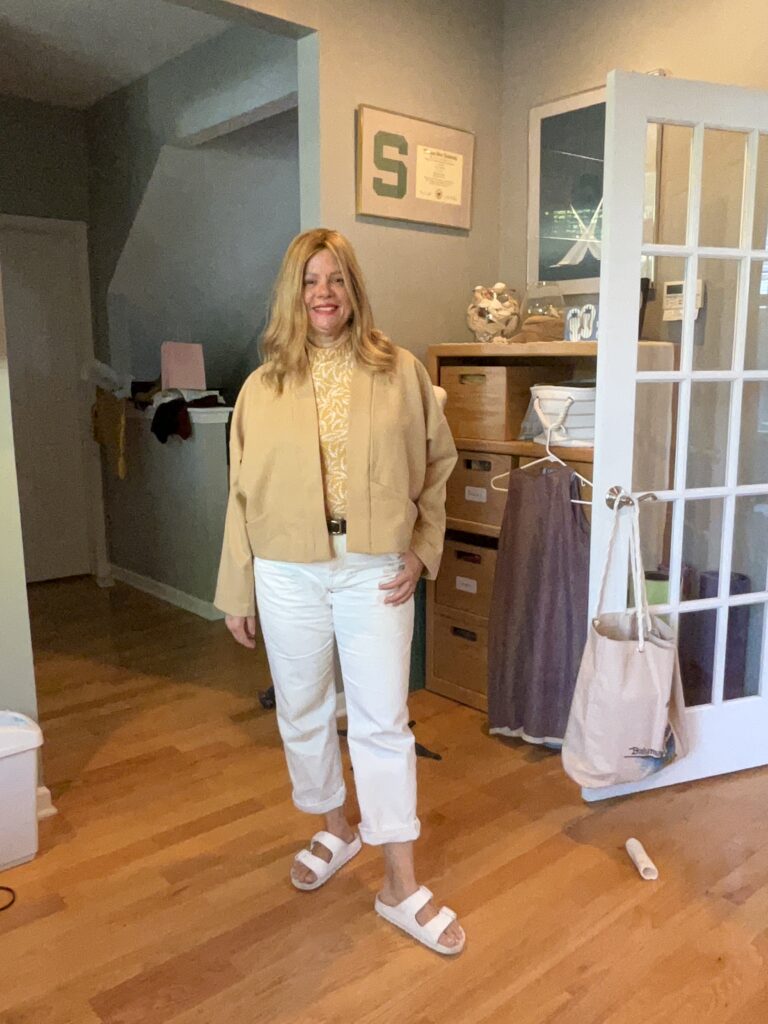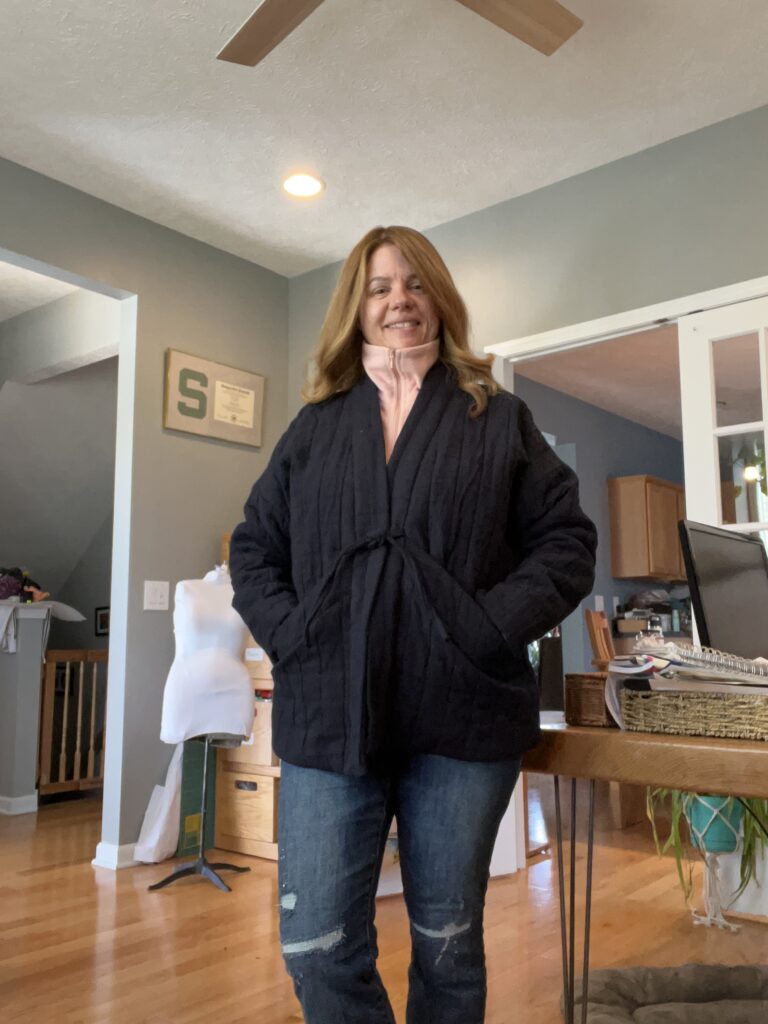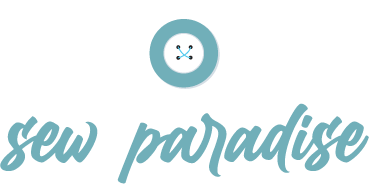The two piece set is all the rage – from lounge to chic, here are some of the patterns and fabrics I have and recommend to sew two piece sets for fall and winter. Want one for spring and summer? I’ve got you covered, too, hop on over to this blog post for how to sew two piece sets for spring and summer.
The two piece set is usually a sweater-y top and a soft pant. There are lots of choices for patterns. You might even have some in your stash – both current and vintage patterns feature these!
The Sew House Seven Toaster Sweaters – either version is awesome as the top of your sewn set
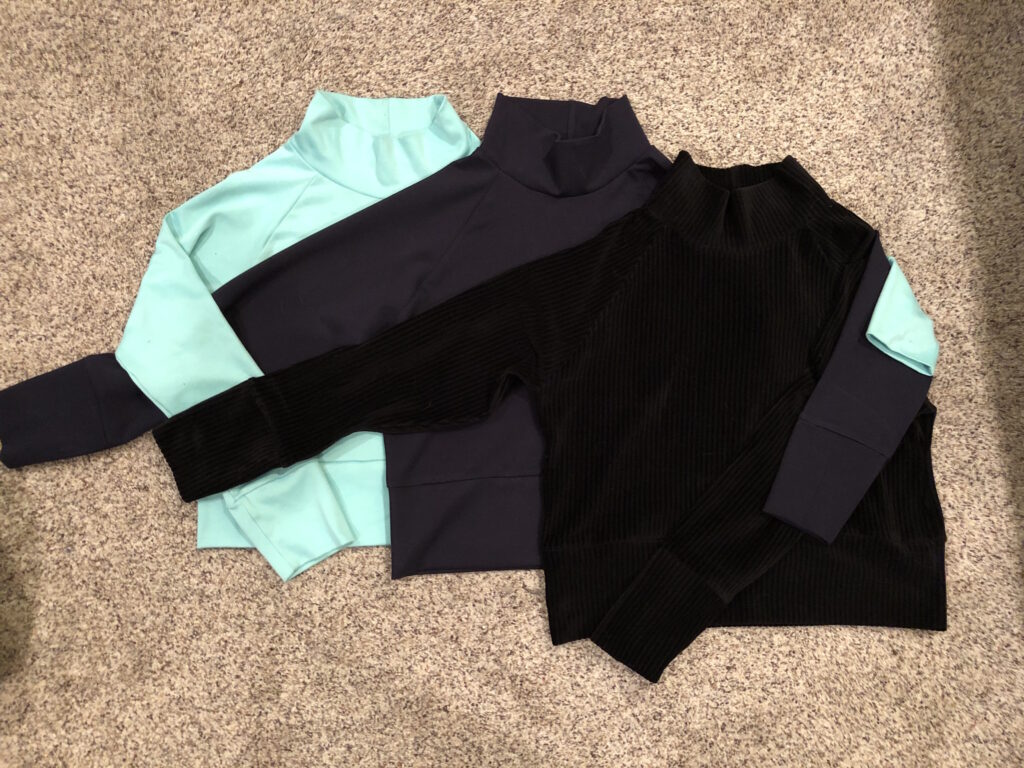
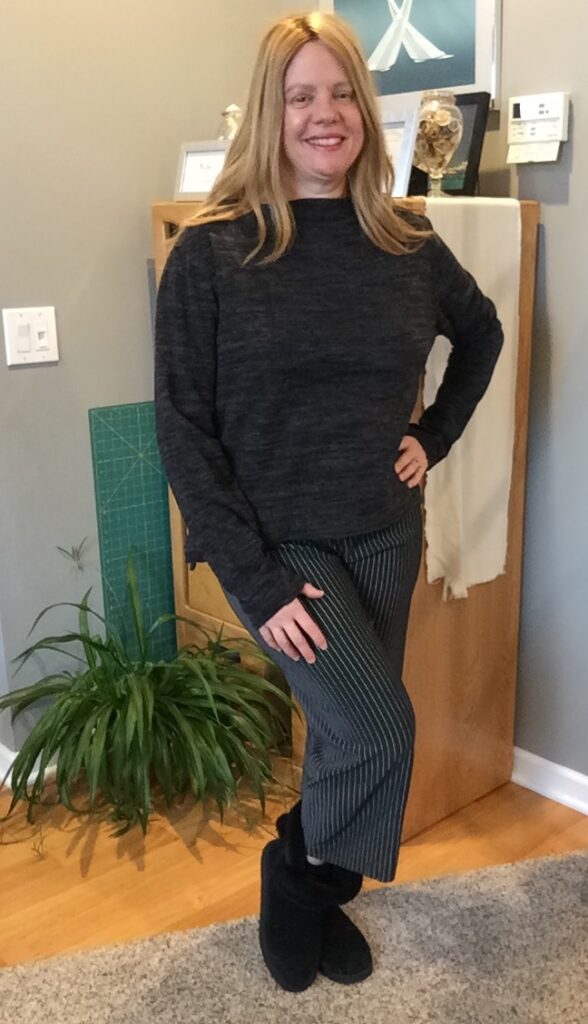
The Mile End Sweatshirt has three views – a pullover with ties in the front, a pullover without and a hoodie.
Know Me ME 2033 – this summery set has a great pair of barrel-leg pants with a fun wave detail that’s great for using up smaller lengths of knit fabrics. It’s easy to sew these shapes in a stable ponte, French Terry or other firm knit, pair the pants with the Toaster Sweater with the turtleneck and raglan sleeves and use the lower sleeves on the Toaster as the same contrast as the pants wave section. It is also for wovens but the curved panels take patience and a lot of snipping into the curves! I have made both but the knit one is much easier.
Vogue 1914 lounge set – leave it to Vogue to create a super arty top and pants combo. The sweater is cropped but you can lengthen it to meet the pants.
The Paula Set from Dudas Patterns (Etsy)
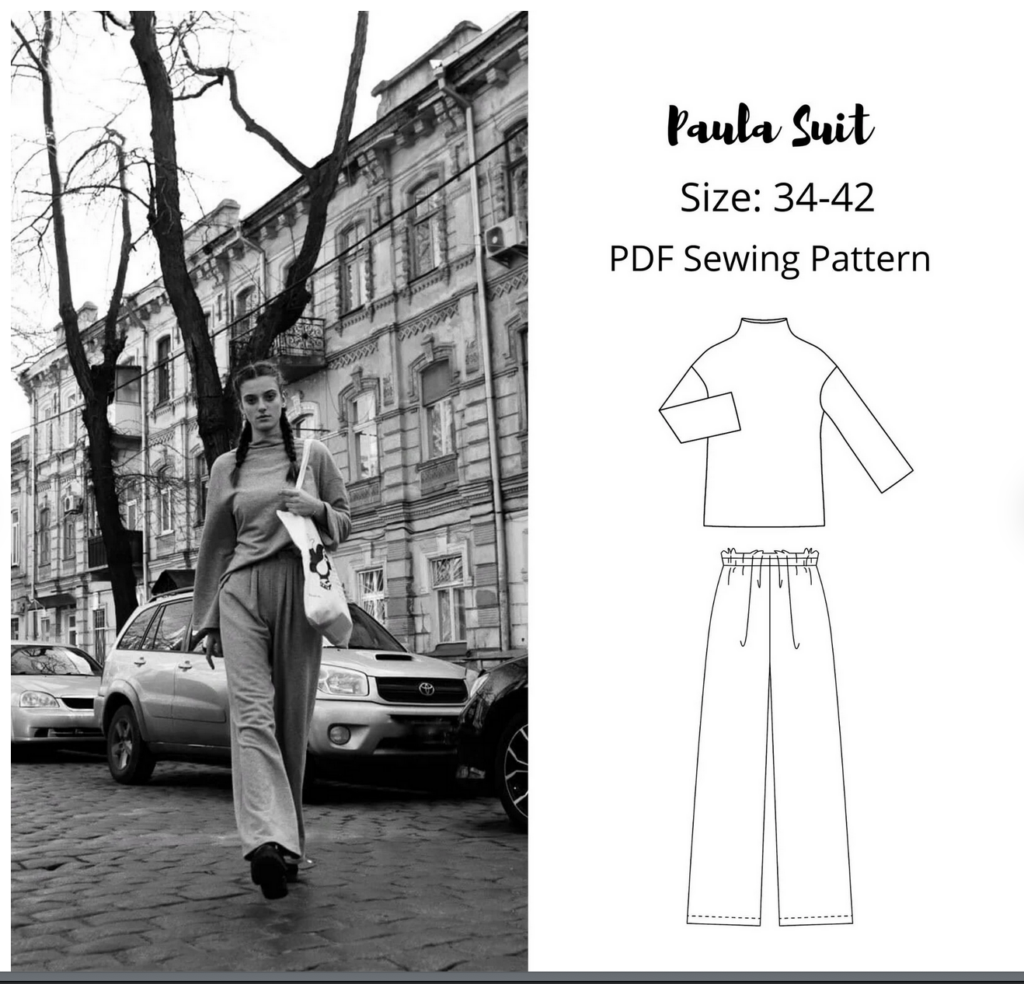
Art School Sweater from HotPatterns and Palazzo Pants also from HotPatterns. This is the best oversized V-neck sweater I’ve seen (or sewn), and you can make it without the patchwork details (or use up some smaller cuts of knit scraps!)
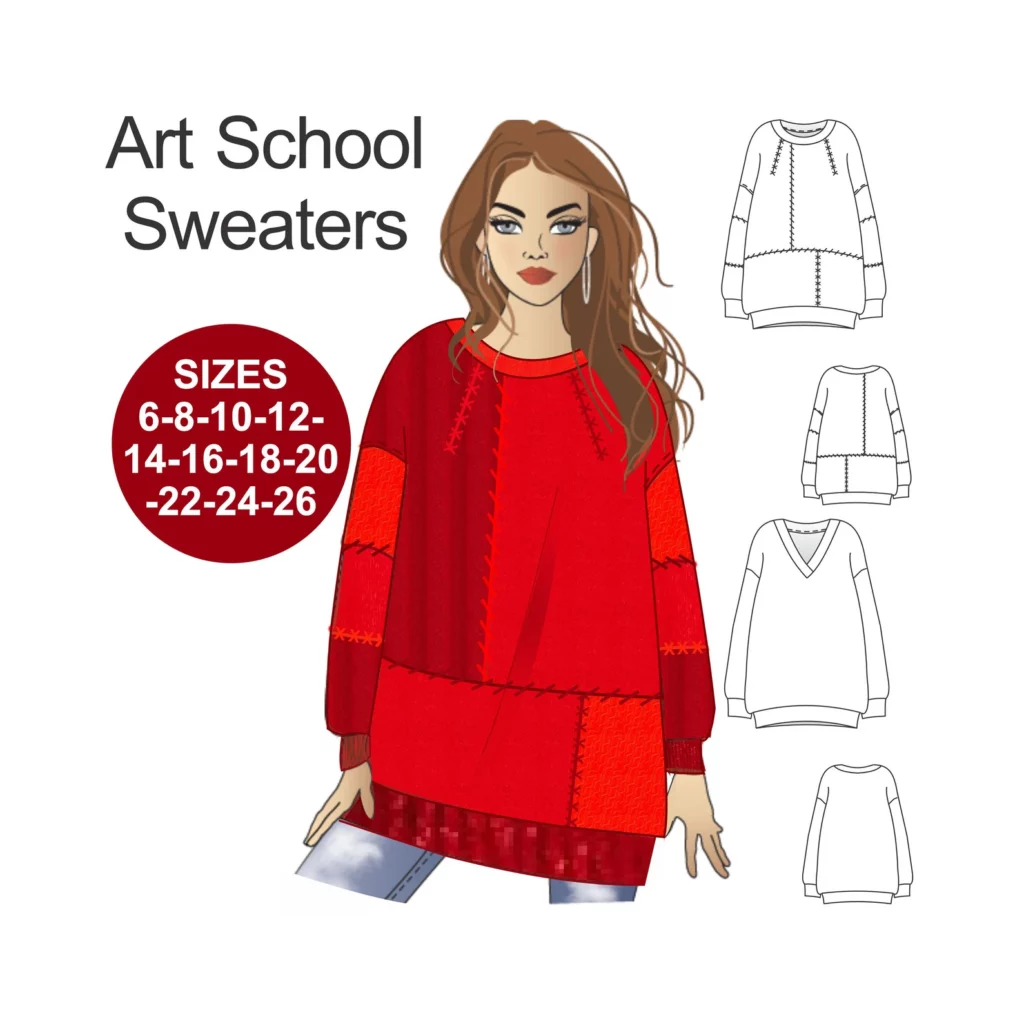
The Cass Pants (FREE!) although designed for woven fabrics like linen, these also work well in a stable knit fabric. The wide legs are very on trend right now.
Your Local Fabric Store has great fabrics (not your chain store, but an indie one) but if there isn’t one near you, MY LFS ships everywhere and they will offer personalized phone support too. Seams Fabric is in both East Lansing, MI and Kalamazoo, MI.
The example of a “set” is the sweater with pants shown below (one of those online overseas marketplaces where you never get what you think you ordered; it never looks that good!)
If you want a KNIT sweater, like with yarn, head right on over to your local thrift store. Check both the men’s and women’s section for oversized sweaters that are likely way better than whatever you can buy online, and a whole lot less expensive. THEN get some fabric to coordinate for your pants. The twill tape used here is an easy to use drawstring for elastic waist pants. You can also use a sewn woven fabric tie too.
Look at these gorgeous fabric options! From left, a whole section of sweatshirting and structured knits, ponte de Roma solids and textured knits in gorgeous fall colors! These are all from https://www.seamsfabric.com/ and they ship everywhere!
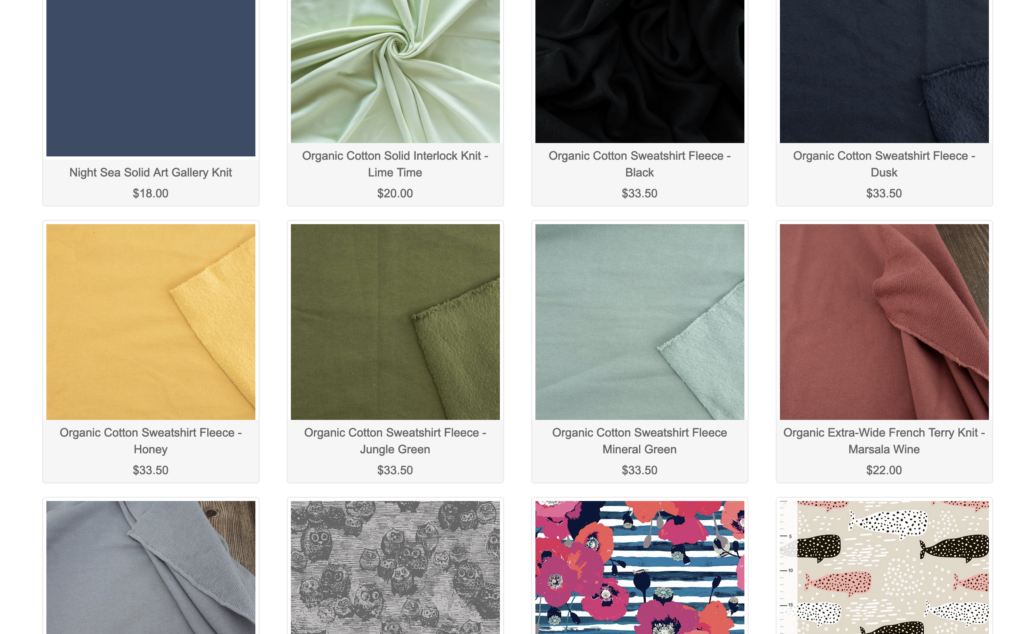
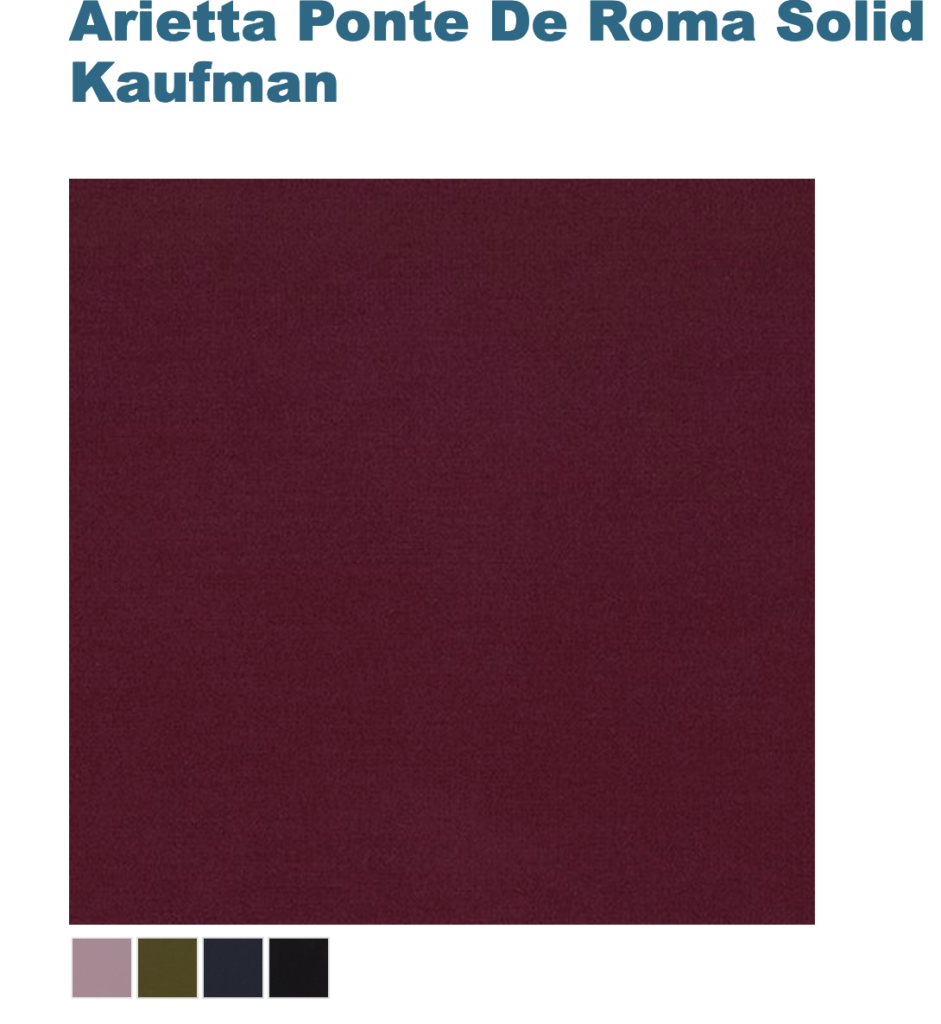
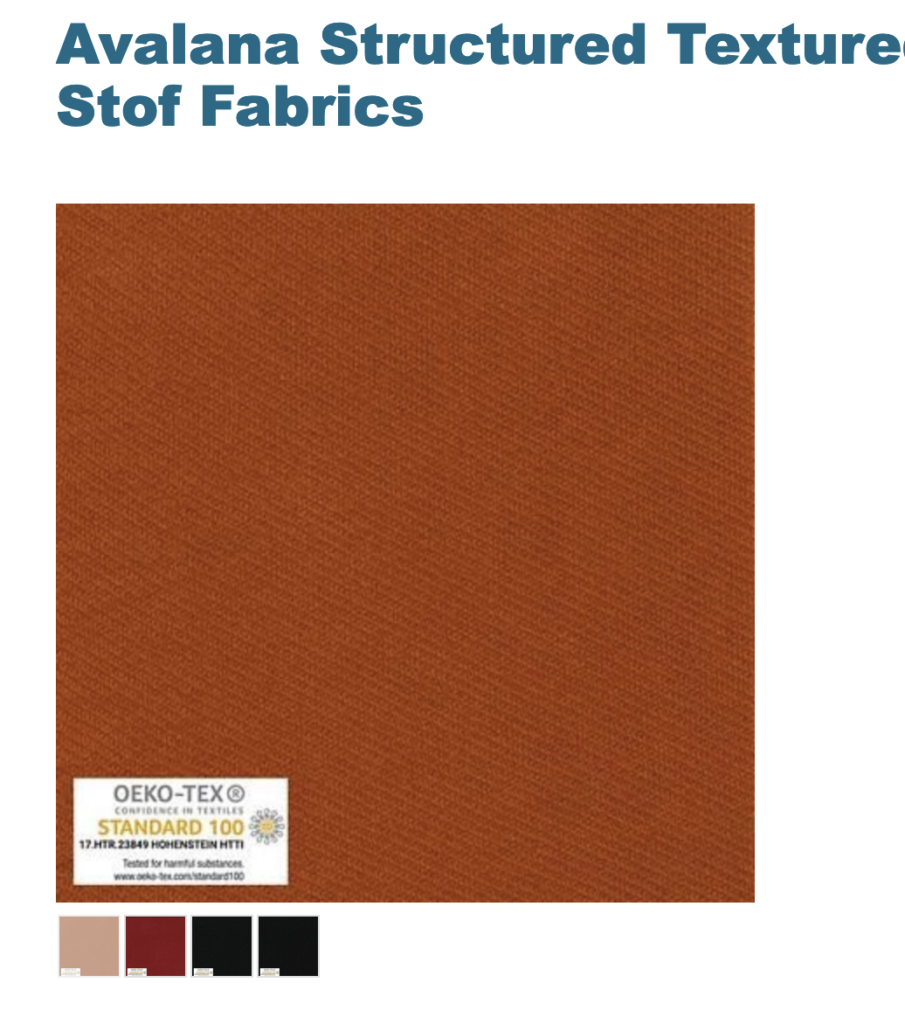
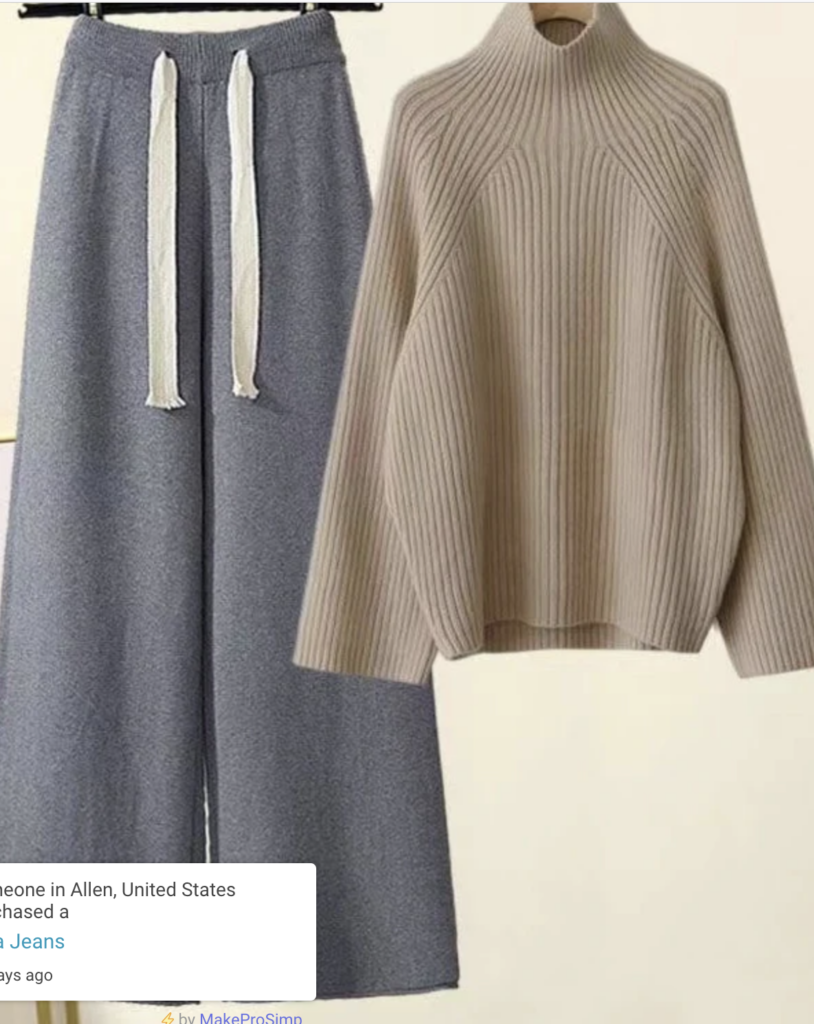
Let’s dive into sewing the two piece set for fall and winter
Pick your two patterns. Pre-wash your knit fabric and dry it. Press it. When cutting, don’t let the fabric drape off the table, and use a rotary cutter and mat if you can. This helps when cutting knit fabrics. If you cannot, pin or use weights to keep the pattern down and go slow as you cut so as to not stretch the fabric.
Pro results when hemming knit fabrics: use either Seam A Steam or Wonder Under tape to stabilize the hem edges. You may also edge-serge the raw edge, and use that as the stabilizer when you fold and topstitch.
While a serger for construction of your knit set is helpful (it has differential feed which helps prevent stretching or “shrinking” of the seams), knits do not require seam finishes, so it’s OK to use a narrow, short zigzag stitch as your main stitch and then press the seam allowances open. I often will use a narrow zigzag (or “lightning”) stitch and a wider longer one next to it and press the seam allowances to one side.
For the waistband: interface the front where the ties will come out, then sew buttonholes or use a grommet or eyelet maker. You MUST interface this section (sometimes I use double layered interfacing on knits) before making buttonholes or installing grommets. Then, thread elastic through the waistband (through the opening in the back), as usual, and then from the front, thread in your twill tape or woven-fabric drawstring ties.
On hems, lengthen your stitch length, and for all seams, use a stretch or ballpoint needle in your machine (ballpoint for not-super-stretchy knits, and stretch knit for the stretchier ones.)
If you’re worried about your knee area ‘bagging” out – use an interfacing designed for knit fabrics. Cut a large rectangle that fits from seam allowance to seam allowance and press this on the wrong side around the knee area before sewing the side seams. This will help the recovery of the fabric underneath. It won’t show from the right side. You can test this on a scrap of fabric by applying it to half the scrap and holding it up and moving it around. You’ll see the drape of the fabric with and without interfacing to decide if that weight of interfacing works. If your fabric has any lycra, you probably don’t need to do this, but 100% cotton knits you may want to!
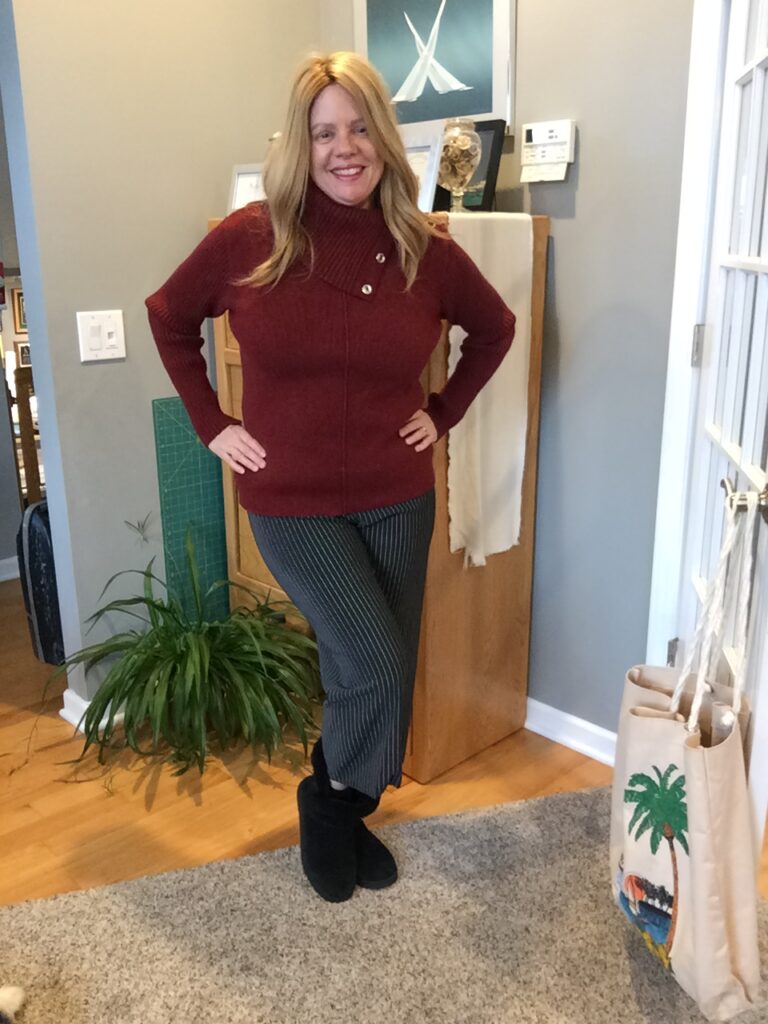
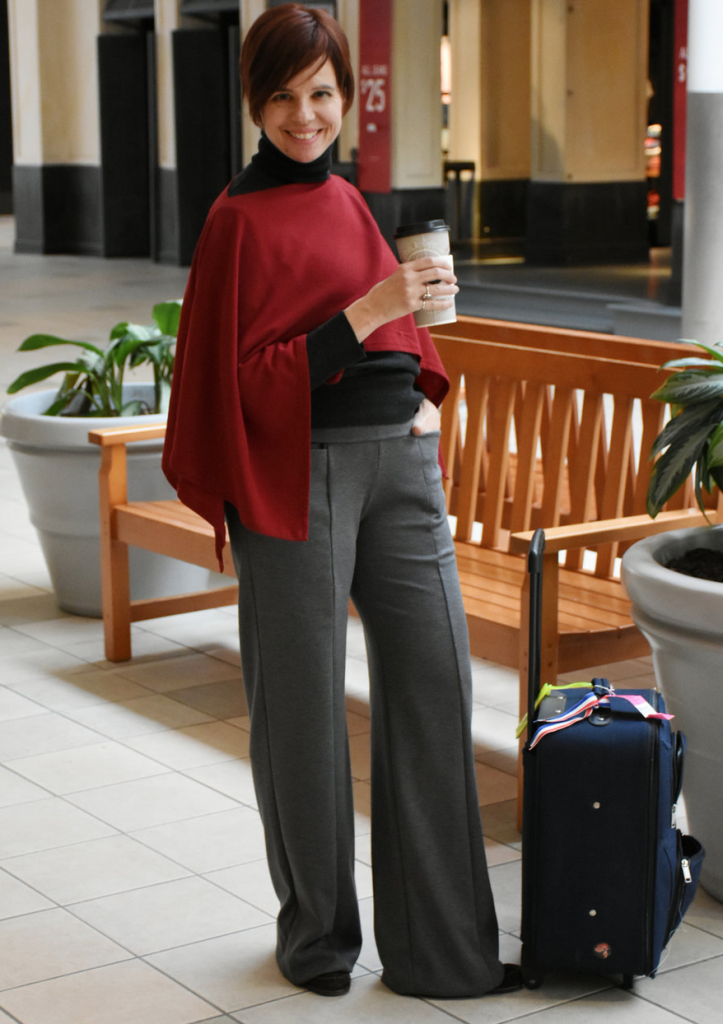
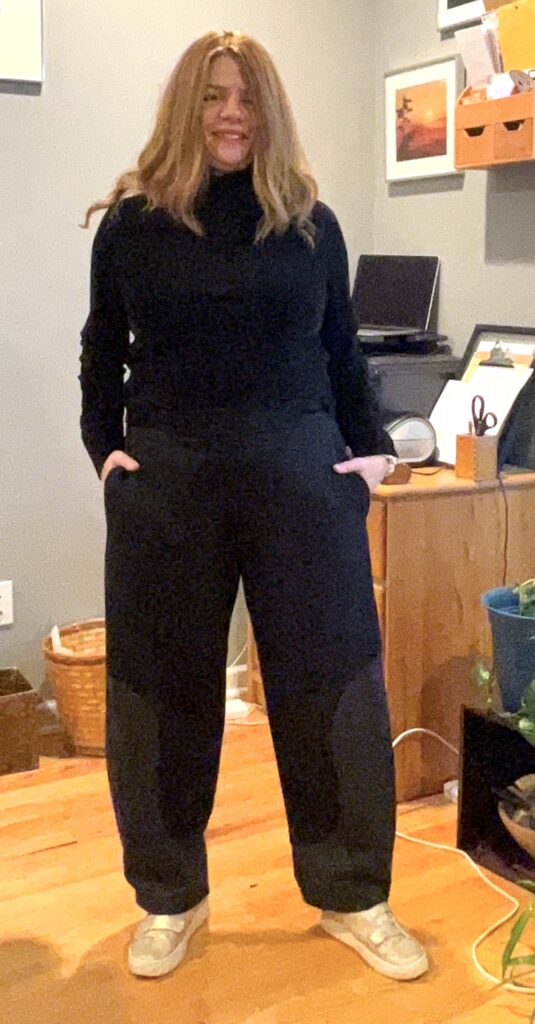
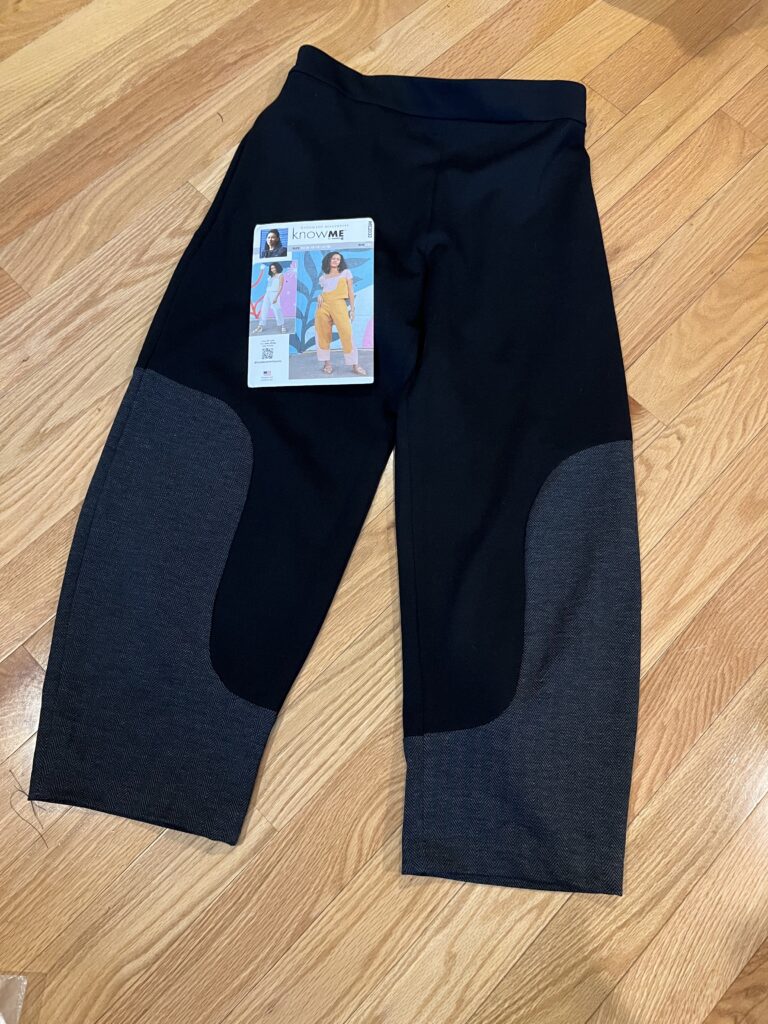
Styling your knit sets:
These look great with sneakers and a crossbody bag for errands, school sports events and lounging at home, but take them up a notch by wearing a blazer, a beautiful scarf or wrap and either ballet flats or a flat Chelsea style bootie. You can layer a soft coat like the Nova Coat or the Megan Nielsen Hovea Jacket over these knit sets too!

